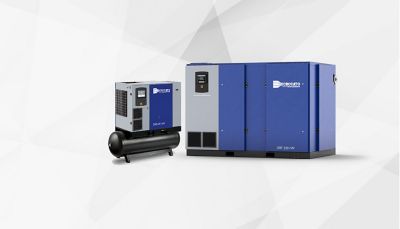Using an air compressor regularly generates moisture during the compression process. To protect your system and reduce maintenance costs, a compressed air dryer is essential. Choosing the right air dryer – whether a refrigerant or a desiccant dryer – ensures dry, clean air and extends the life of your compressor.
Why You Need an Air Dryer for Your Compressor?
Moisture in compressed air can cause:
- Equipment damage
- Product contamination
- Costly repairs and downtime
A properly chosen and maintained air dryer for air compressors keeps your compressed air system efficient, reliable and clean.
 Invest in the right air dryer for air compressor for high-quality compressed air
Invest in the right air dryer for air compressor for high-quality compressed air
Types of Air Compressor Dryers
There are three main types of air dryers:
- Refrigerated dryers
- Desiccant dryers
- Deliquescent dryers
Each type has its own advantages depending on your operating conditions and air quality requirements.
Refrigerated Air Dryers
Refrigerated air dryers are the most common solution. They work by cooling the compressed air to condense moisture, then reheating it to a usable temperature.
- Ideal for general industrial applications
- Delivers a dew point around 3°C
- Available in non-cycling (constant operation) and cycling (energy-saving) models.
Desiccant Air Dryers
Desiccant air dryers use materials like activated alumina or silica gel to collect water and remove it through a regeneration process.
- Ideal for critical applications requiring ultra-dry air
- Reach dew points as low as -70°C (-100°F)
- Require energy for regeneration, either through heating or purging dry air
How They Work
To help you choose the right air dryer it is important to understand the different types.
Refrigerated Dryers
Function like an air conditioner – cooling incoming air, condensing the water, removing it, and reheating the dry air.
Desiccant Air Dryers
Uses desiccant or solid desiccant to absorb water vapor from the compressed air. The beads are regenerated in cycles to maintain performance, which may consume more energy.
How to Choose the Right Air Dryer
When deciding between a refrigerant and desiccant dryer, consider:
- Required air quality/dew point.
- Compressor pressure and flow rate
- Operating temperature (humidity, temperature, etc.)
- Energy efficiency and long-term costs
- Application-specific needs (e.g., sensitive electronics or dry processes)
Installation and Maintenance Tips
To get the most out of your air dryer for compressor:
- Follow the manufacturer’s guidelines for installation
- Schedule regular inspections and maintenance
- Replace worn parts on time
Common Questions About Air Dryers for Air Compressors
Here are some common questions related to air dryers for air compressors:
What does an air dryer do for an air compressor?
It removes moisture producing during the compression process in an air compressor. The air dryer helps ensure smooth operation and prevents damage to compressor parts.
What types of air dryers are available?
Refrigerated, desiccant, and deliquescent dryers - each with specific applications and benefits.
How do refrigerated air dryers work?
They cool air to condense the water vapor, remove the moisture and then reheat the dry air.
When should I use a desiccant dryer?
In environments which require ultra-dry air, such as pharmaceutical manufacturing and food and beverage production.
What about cost and energy efficiency?
Refrigerated dryers are budget-friendly and easy to maintain. Desiccant dryers costs more to operate but offer higher air purity. Cycling models increase energy savings over time.
Get in touch with our experts
Choosing the right air dryer for your air compressor is key to maintaining performance, reducing maintenance, and ensuring air quality. Whether you go with a refrigerant dryer for general use or a desiccant dryer for ultra-dry air, make sure it meets the needs of your specific application. And don’t forget – proper installation and regular maintenance go a long way in maximising the lifespan of your system.
Explore our full range of compressed air dryers to find the perfect match for your operation.






